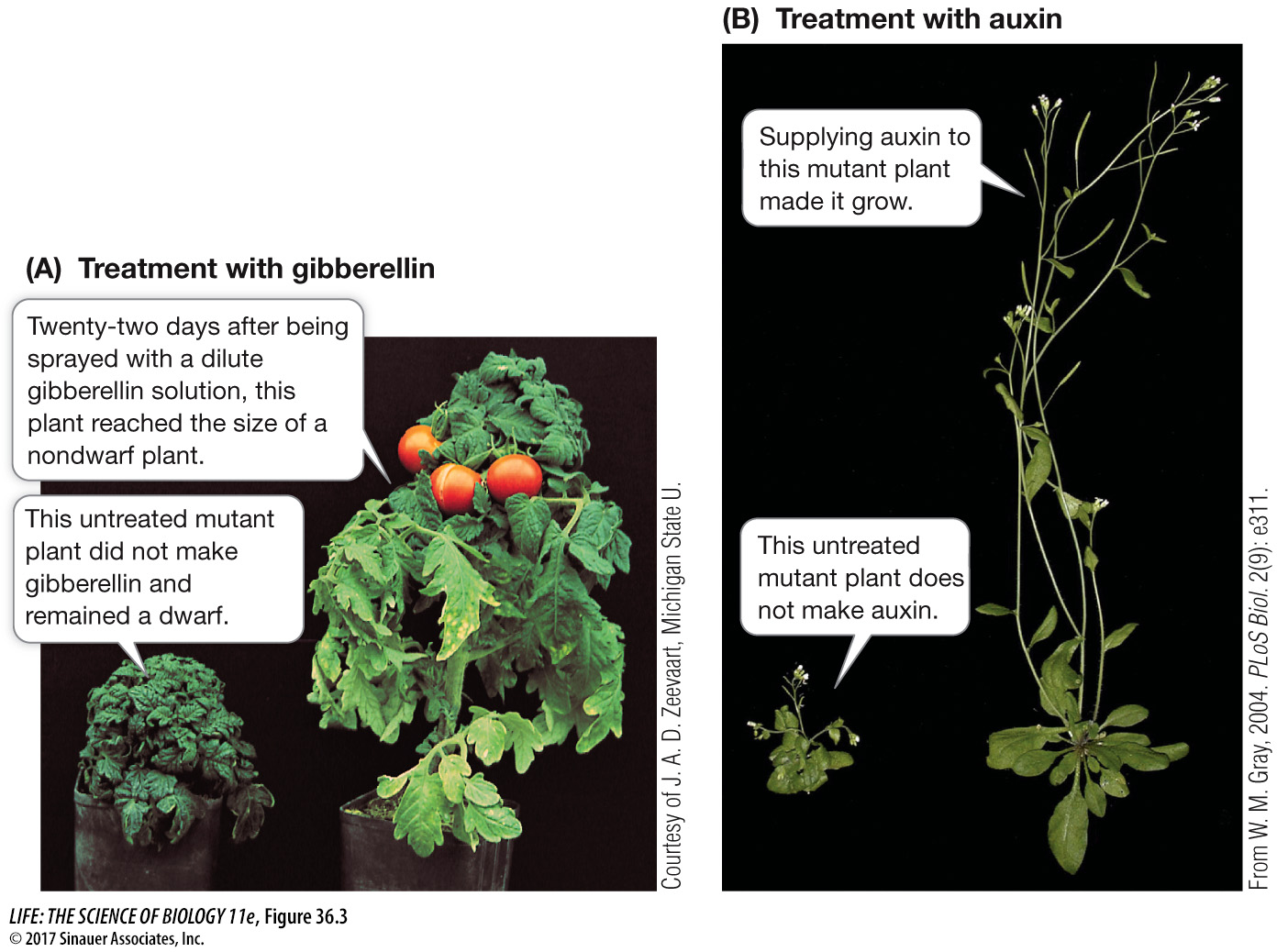key concept
36.2
Gibberellins and Auxin Have Diverse Effects but a Similar Mechanism of Action
key concept
36.2
Gibberellins and Auxin Have Diverse Effects but a Similar Mechanism of Action
The discovery of two key plant hormones exemplifies the experimental approaches that plant biologists have used to investigate the mechanisms of plant development.
focus your learning
Gibberellins have multiple roles in plant growth and development.
The first discovered function of auxin related to its role in phototropism.
Polar transport of auxin distributes the hormone down the shoot; lateral transport distributes it from side to side.
Early in the twentieth century, two plant hormones were discovered: gibberellins (there are several active forms) and auxin (there are several forms, but one predominates). Initially, the discoveries came from observations of natural phenomena:
Gibberellins: In rice plants, a disease caused by the fungus Gibberella fujikori resulted in plants that grew overly tall and spindly.
Auxin: Biologists and indoor gardeners noted that seedlings would bend toward the light when placed near a light source.
A chemical substance was then isolated that could cause each phenomenon:
Gibberellic acid (see Table 36.2) made by the G. fujikori fungus caused rice plants to overgrow. Later it was found that plants make gibberellic acid as well, and that applying it to plants caused growth.
Indole-
3- acetic acid (see Table 36.2) applied asymmetrically to the growing tips of seedlings caused cell elongation on the side away from the light, which resulted in the shoot bending toward the light.
Finally, mutant plants that do not make each hormone exhibit a phenotype expected in the absence of the hormone, and adding the hormone reverses that phenotype (Figure 36.3):
Tomato plants that do not make gibberellic acid are very short; supplying them with the hormone results in normal growth.
Arabidopsis thaliana individuals that do not make auxin are also short; supplying them with that hormone reverses that phenotype.

Note that the phenotype involved—
The approaches outlined above—